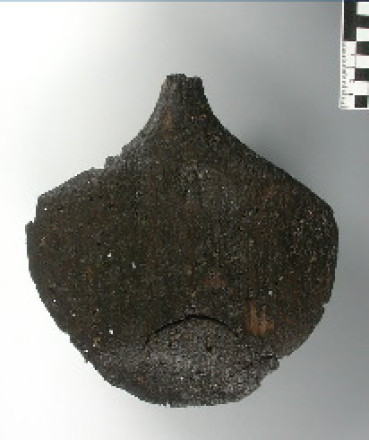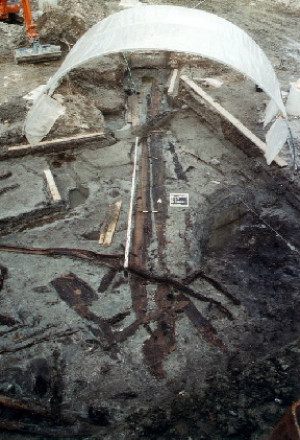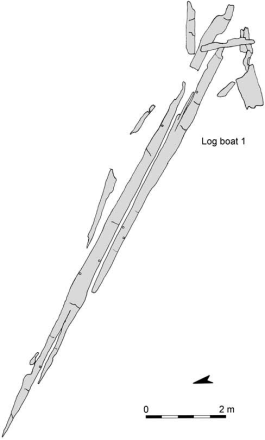History
Three logboats were excavated in Stralsund in Germany in 2002. Two of them were around 7.000 years old and are the oldest boats found in the Baltic area. The third was about 6.000 years old.
The two oldest logboats from Stralsund are from the Mesolithic period and were between 8 and 9 meters long. They show signs of having a fireplace in the aft area. The fire was isolated from the vessel with a layer of sand and clay. The possible use was to attract fish with the light at night and/or to cook and stay warm during longer journeys. The boats were propelled with wooden paddles.
During the Neolithic period, between 4.000 and 3.500 BC, this area was used for agriculture and pastoralism. The youngest boat was from this period and was approximately 12 meters long.
Ertebølle Culture
The stone age dwellers along the banks of the Strelasund Channel must have been in close contact with other inhabitants in northern Germany, Denmark and southern Sweden. With their similar living conditions, tools and technological developments, this site is considered to belong to the with the Ertebølle Culture that was prevalent there in this period.

Description
Alternative type name: is a dugout canoe.
The logboat from the Neolithicwas hewn from a large linden tree trunk, which being a soft wood is easily worked with stone axes. At present, this is the longest known logboat from the southwest Baltic area (12 m).

Status
The finds were removed for conservation.

References
- Klooss, S. and Lübke, H. (2009).
The Terminal Mesolithic and Early Neolithic log boats of Stralsund-Mischwasserspeicher (Hansestadt Stralsund, Fpl. 225). Evidence of early waterborne transport on the German Southern Baltic coast.
In book: Between the Seas – Transfer and Exchange in Nautical Technology.
pp 97-105.